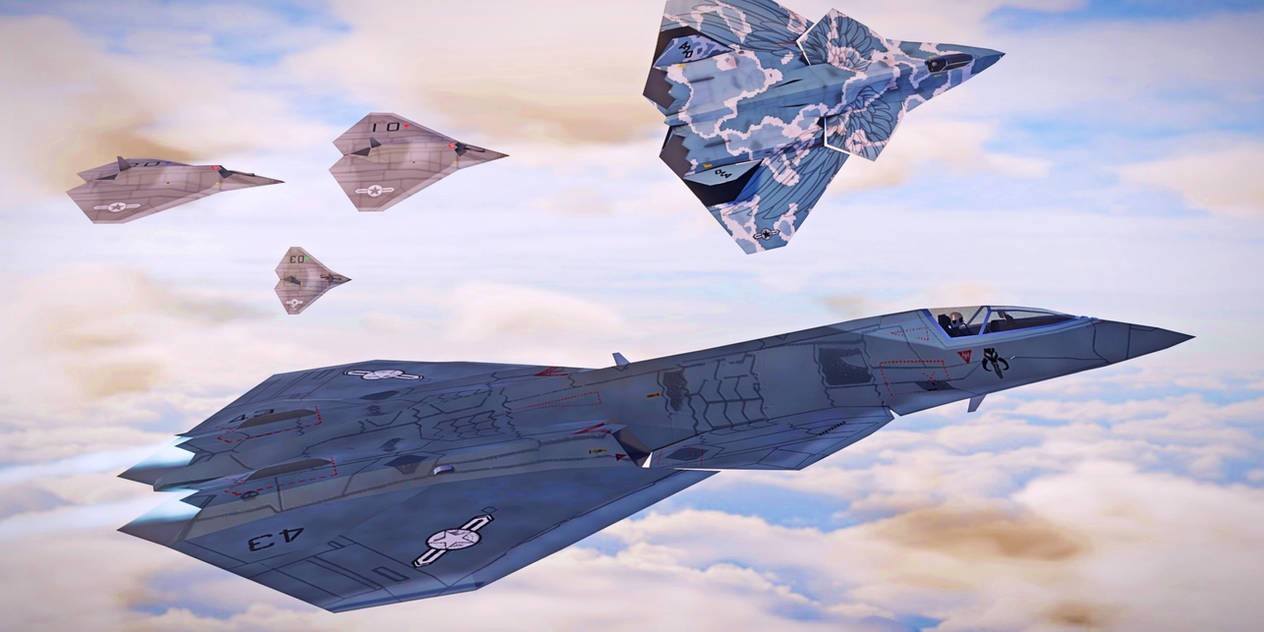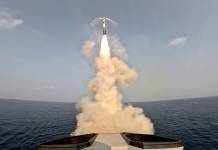Lockheed Martin has released a new rendering depicting a hypothetical sixth-gen combat aircraft component. The artwork was primarily meant to showcase Lockheed’s LMXT tanker concept, which is shown refueling a stealthy, tailless sixth-generation fighter jet.
As envisioned by Lockheed Martin, the potential human-crewed NGAD aircraft features a diamond-shaped wing with straight leading and trailing edges. The wing and the long, extended fuselage, which has a single conspicuous chine line and abruptly tapers toward the nose, are intimately integrated.

Tailless designs, for one, have appeared frequently in NGAD-adjacent concept art since they would offer extremely low observability (stealth), significant internal volume for fuel, weaponry, and sensors, and a high level of efficiency.
Additionally, two somewhat shallow ‘bulges’ that seem to be related to the propulsion system can be seen on either side of the fuselage’s center section.
According to a senior fellow at the Institute of Peace and Conflict Studies (IPCS), Abhijit Iyer Mitra, “This is generally in line with some of the previous renders we have seen which indicated a twin-engine design.
However, it is surprising that it seems much smaller than the previous render designs of the NGAD. It also confirms that the level of total signature management is so high that it does not have to depend on maneuverability which is why it has done away with vertical stabilizers.”
Mitra further says, “the smallness of the size also seems to indicate it is an optional pilot aircraft as the pilot might be quite crammed in it, which is unusual for a twin-engine aircraft but the relative ratio compared to the tanker rendering seems to indicate that the fighter jet could fly completely autonomously without a pilot as well.”
What’s surprising is that the infrared management from the exhaust is there, but it is not as extreme as we thought it would be to prevent the need for maneuverability completely.”
The plane’s design resembles several earlier renderings of the fighter jet that Lockheed Martin is allegedly working on for the US Air Force’s Next Generation Air Dominance program.
Two of these designs have so far been made public: one with a V-tail resembling the Northrop Grumman YF-23 prototype from the 1990s in general, and the other possibly related to the US Navy’s F/A-XX program from the early 2010s, noted Aerotime Hub.
The latter is eerily similar to the triangle jet seen in Lockheed Martin’s most recent illustration, suggesting that the company is still developing the concept.

Since the engine air intakes are hidden, they are likely positioned below the airframe, as is expected of sixth-generation models. On August 19, the US Air Force (USAF) announced the awarding of contracts totaling around $4.9 billion to five companies for the prototype development of an adaptable engine for the sixth-gen fighter, as previously noted by EurAsian Times.
This is not a vast airframe compared to the refueling boom, but the NGAD envisions a larger manned combat aircraft design with increased internal fuel and weaponry carriage.
The service has also mentioned the potential for two different aircraft types, one with a longer range better suited for operations in the Indo-Pacific and one with a lower range that is more suited for European theatres. Therefore, the size cannot be estimated for now.
Aviation analyst Prashant Prabhakar told EurAsian Times: “A tailless design could induce less parasitic drag and good stealth characteristics although, on the flip side, it could have a potential sensitivity to trim. The engines of stealth aircraft are often located deep inside the fuselage, which seems to be the case here as well.
Stealth is an inevitable characteristic of 6th gen fighters. I think the overall objective would still be to reduce the radar signature reflected from the fighter to the enemy radar.”
The concept art was released a day after another defense contractor Northrop Grumman announced the public unveiling date of America’s next-gen stealth bomber, the B-21 Raider. Like the NGAD, the B-21 is a very closely guarded program with an aircraft built into a flying wing design.
Is The NGAD Coming Soon?
According to the US Air Force secretary, the next-generation fighter platform is still in the design phase. It has not yet officially reached the engineering, production, and development stages.
Lockheed Martin is one of the many companies working on the NGAD. This “family of systems” includes new sensors, weaponry, networking, and battle management capabilities. Secretary of the Air Force Frank Kendall stated in June that there was still competition within the project but provided no further details.

Besides the sixth-generation fighter jet, the NGAD also envisions the concept of Cooperative Combat Aircraft (CCA), which will fly together with the sixth-generation fighter jet in potentially a manned-unmanned teaming format.
Due to their autonomy, CCAs can execute directions given by a pilot just as a formation pilot executes directions given by the formation lead.
That being said, the 6th generation fighter that will be a part of the NGAD has not yet determined its capabilities. Even if the technologies employed in the (NGAD) fighter aircraft were advanced enough to allow entrance into the engineering and manufacturing development (EMD) phase of the NGAD program’s acquisition timetable, the US Defense Department has yet to take a call to go further.
The NGAD will cost several hundreds of millions of dollars, Kendall stated in a hearing before the House Armed Services Committee in April 2022. The NGAD is the most expensive aircraft program in history, though he did not provide a number.
- Contact the author at sakshi.tiwari9555@gmail.com
- Follow EurAsian Times on Google News





